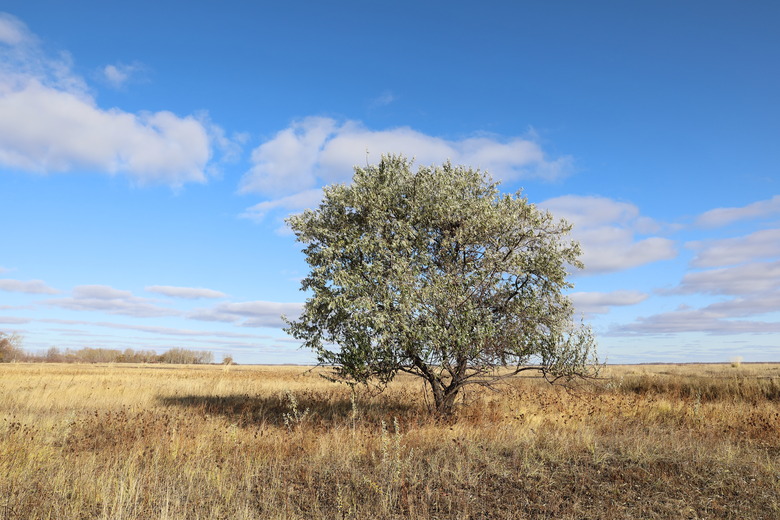Differences Between Steppes & Savannas
Steppes and savannas are two examples of Earth's many biomes. A biome is a region that boasts similar plant and animal life forms. The regions are generally contiguous. A desert, for example, is a biome.
Grasslands are also biomes. Savannas and steppes are two examples of grassland biomes. As both are grasslands, they share some similarities. For example, savanna and steppe vegetation is quite similar, but there are key differences that differentiate the two from each other.
Grassland Biomes
Grassland Biomes
Nearly one-fourth of the Earth's land is classified as grassland. Grasslands have fewer than one tree per acre and have been described by New South Wales's Country Areas Program as "seas of grass." Grasslands generally get between 10 and 30 inches of rain per year.
This is important because more precipitation that 10-30 inches per year would allow those lands to turn from grasslands into forest. Conversely, grassland areas receiving less than 10-30 inches per year would allow those lands to turn from grasslands to desert.
Steppe Grassland
Steppe Grassland
A steppe is a particular sub-type of grassland. Steppe grassland are found on nearly every continent, with the exceptions of Australia and Antarctica. They are drier and colder than other grasslands. Steppes lack humidity because they are far from the ocean and near mountains.
Mountains act as barriers, keeping moisture out. Few people live in the steppes as the soil quality is poor and, while there are numerous grasses, few other plants live there. The main steppe vegetation includes herbs and grasses that can grow up to two feet tall and are often referred to as seas of grass. Steppes are often an intermediate area between forests and deserts.
Depending on where the steppe environment is in the world, you may see many other types of vegetation, especially in western-leaning steppes. These have more humidity, so you'll see an increased number of shrubs and pseudo-forests of these shrubs.
Savannas
Savannas
Savannas, sometimes called "tropical grasslands," generally lie between a tropical rainforest and a desert. As such, they are warmer than steppes. They get roughly the same amount of rain as a steppe, but most of it falls during the summer. Savannas get an average of between 15 and 25 inches of rain during this season.
This balance is important because, like steppes, they can become either forests or deserts if the rain pattern shifts. Because they receive so much water, savannas support a few trees, but not enough to obscure the sky from beneath the way a nearby rainforest might.
The plants and animals that do live here are highly specialized. They must withstand the long season of drought that follows the savanna's wet season. One example of adaptations in the savanna are the plants long roots. These roots reach deep into the soil to extract moisture and water.
Some specific examples of savanna animal and plant species include:
- Gazelles
- Cheetahs
- Giraffes
- Lions
- Ostrich
- Red oats grass
- Elephant grass
- Umbrella thorn acacia tree
- Baobab shrub
- Raisin bush
- Gum acacia tree
Difference Between Savanna and Steppe
Difference Between Savanna and Steppe
The most important difference between a steppe and a savanna is where it is located. Savannas lie closer to the equator than steppes and, thus, are warmer than steppes. Being closer to the rainforest means that savannas have two major seasons: a hot, wet summer and a marginally cooler, but much drier winter.
Steppes, by contrast, lie further from the equator and in sheltered areas. This means the precipitation they get is dispersed evenly throughout the year. Fewer large plants can take root under such dry conditions. Being further from the equator also means colder conditions, and in some northern steppes, snow, rather than rain, is common.
Cite This Article
MLA
Osborne, Alan. "Differences Between Steppes & Savannas" sciencing.com, https://www.sciencing.com/differences-between-steppes-savannas-8468978/. 22 November 2019.
APA
Osborne, Alan. (2019, November 22). Differences Between Steppes & Savannas. sciencing.com. Retrieved from https://www.sciencing.com/differences-between-steppes-savannas-8468978/
Chicago
Osborne, Alan. Differences Between Steppes & Savannas last modified March 24, 2022. https://www.sciencing.com/differences-between-steppes-savannas-8468978/
